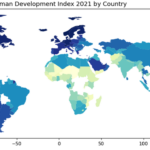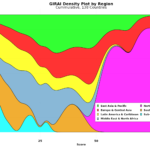Wednesday 7 March
Spent most of the day traveling. Arrived in Johannesburg around 8am and managed to get to the hotel in Pretoria at 10. Had lunch with UNDP staff to quickly catch up. Met the RR for almost two hours to discuss the e-skills project and its relevance to UNDP within the broader support we are providing to the government in the country. My impression is that the CO is seriously reconsidering its support for the project as it seems quite specialized and seemingly unrelated to other UNDP programmes. It was also hinted at the meeting that support for the project within UNDP is not as strong as before. Talks of mainstreaming are also taking place. In the meanwile, both UNDAF and CPDs for 2013-2017 are being finalized with the government. Will ICTD be there?
As I see it, the spin given to e-skills by the Department of Communications is indeed sectoral with strong emphasis on skills (only) and academic research and support. Consider the emphasis on skills. I rather have something like a National ICT capacity development programme which overcomes both the “techie” emphasis placed on the “e” part and at the same time goes beyond skills. Instead, it centers on the national human capabilities that are needed in any country to achieve its own development agendas and targets. No ministry or public institution can afford to ignore such approach. This will made the programme cross-cutting and closely linked to the current national development plan and priorities, as well as ongoing programmes.
But can UNDP trigger such change at this stage in the game? One way to start doing this is to create a high-level policy board for both the project and the e-SI (e-skills institute). Such board can bring together all key players within government (DPSA, Rural development, Home affairs, GITOC, Thusong telecenters, health and education, etc.) that are involved in bring public services, creating jobs and fosteting ICTs in the country. UNDP could facilitate this process as well as help move the high-level discussions from sectoral e-skills to cross-thematic capacity development via ICT diffusion and use. The policy board can also be helpful in establishing a cooperation framework between public institutions to operate more effectively at the local and provincial level -and piggyback on ongoing GIF efforts.
The same strategy can also work for the running and management of the e-skills nodes/hubs (5 already deployed, 4 more to come). But in this case the involvement of local and provincial governments will be not only required but necessary -once some sort of central framework has been agreed in principle by the policy board. Some of the hubs are facing daunting challenges, one being the existence of several ICT public access or service centers which communities already use and to which e-skills cannot formally join in seamless fashion.
In addition, e-SI also needs both policy and operational support for its own operations. UNDP ZA is already thinking of creating a PMU within e-SI. My suggestion was to also bring some solid policy expertise within it to strengthen the approach mentioned above.
I also suggested to UNDP ZA to “connect the dots” inside the house by also making “e-skills” a cross-cutting issue relevant to most it not all UNDP programmes. This is apparently not happening at the moment.
Thursday 8 March
The e-skills workshop started promptly at 9am. Saw many familiar faces from both national government and hub representatives I met before.
This time around e-SI brought in Monterrey’s Technology Institute (Mexico) to run and manage the sessions. I did not know that the MTIs is supporting both e-learning centers and social incubators not only in Mexico but also in the US and other countries (see http://www.itesm.edu/wps/wcm/connect/ITESM/Tecnologico+de+Monterrey/English/Social+Development). They have over 3,000 learning centers (close to 20 in the US for Mexican immigrants) which reach over 300,000 (or 100 persons per center, not very impressive if seen this way and we keep in mind the fixed operational costs required to sustain each center!). According to the presenter, the only thing that MTI contributes are the e-learning courses. All other stuff (equipment, location, connectivity, etc.) is secured via partnerships with the private sector and others. HOW is this accomplished is perhaps due to the nature of MTI within the Mexican context.
MTI does have expertise in curriculum development and instructional design for e-learning courses. The workshop used their methodology throughout. One thing that was really missing was the “customization” of the methodology to the current level of development of the e-skills programme. So for example, many of the questions proposed by MTI did not take into account the specific context of e-SI or the many issues the provincial nodes/hubs are facing at the moment.
Why MTI? A South African delegation visited Monterrey over a year ago and was impressed by the work they do on “e-skills”. MTI is now seen a a close partner for the overall implementation of e-skills in the country.
Friday 9 March
The second day of the workshop focused exclusively on curriculum development, a topic which I did not find that fascinating. While in the sessions, I received via email a document depicting UNDP’s support to DPSA (Department of Public Service and Administration). The document is here: SA-DPSA-UNDP-Technical-Support-Repositioning. I was surprised to see here a full section on e-governance and ICTs that, one the one hand ,does not really depict the work UNDP can do in these areas; and on the other, it has no links whatsoever to the e-skills programme. On the latter, DPSA can in the least benefit from any sort of capacity development efforts to reposition itself and improve public service delivery. We certainly need to connect the dots inside UNDP.
Monday 12 March
Met with the CEO of the e-skills institute (e-SI) to discuss various policy issues. First on the non-existing agenda was the potential to more effectively mainstream e-SI into the various other sectors. Capacity development is after all a means to an end that can benefit all sectors and institutions involved in development processes. Adding the e to skills (I am assuming skills==CD which is certainly not the case!) does not change this fact at all. On the contrary, it adds a new dimension that makes it even more relevant and necessary in the 21st century.
Without taking into account the governance mechanism that e-SI needs to create when it becomes an autonomous state enterprise, the idea is to create a high-level policy board that includes key players (as mention in my previous blog) and can be a catalyst to mainstream e-capacities into the overall development processes. Key here are DPSA, rural development, economic development, home affairs, etc. This in itself will show the relevance and critical importance of e-SI while also benefiting core line ministries that must be involved in supporting development goals and targets. e-SI CEO was warm to the idea but did not suggest any immediate follow up.
The ongoing UNDAF process was also mentioned. We asked e-SI to get involved and make sure ICTD , e-capacities or e-governance are somewhere in the 2013-2017 UNDAF. e-SI was not aware of the process and asked for additional details on how to proceed in this regard. This might be a long shot at this point as the UNDAF process has been going on for over a year now and it is expected to be completed this month.
Finally, I directly asked the CEO about his views on UNDP’s contribution to e-SI and it s programming activities. e-SI confirmed that they see UNDP as the entry point to reach other UN agencies and the World Bank, and ensure high-level international support for the process. e-SI will indeed become a separate entity this year and will also establish its won funding mechanisms that will go to support most if not all of its activities. In this light, they do not see any immediate benefit in requesting UNDP’s to bring its policy and programming expertise to bear. I pressed the CEO a bit more on how else could UNDP help. In the end, he suggested that we furnished e-SI with the thematic areas on which three to be created e-SI professorships could focus on. Light at the of the tunnel? Maybe…
Tuesday 13 March
On the way to the airport to catch an early flight to Durban, I heard over the radio a national expert talking about the situation in local governments. The issue here is not money or fund decentralization, he said. Municipalities are receiving, in most cases, their fair share. The issue is that they are not delivering effective public services to local communities. The expert went on to say that his organization had done studies in several provinces and municipalities, And the most common issue they face is the lack on internal capacities and capabilities to deliver the goods. Thus, capacity development is the number one priority in most of them. This is quite relevant for the e-SI programme and its successful implementation. Not that this is really new information. It is just about connecting all these dots…
Attended the meeting of the Steering Committee of the Kwazulu-Natal e-SI hub which is hosted by the Durban University of Technology (DUT, http://www.dut.ac.za/). The committee is chaired by the Vice-Chancellor and Principal of DUT who, I understand, is politically well connected with the highest spheres of national government. A representative of the Department of Economic Development (DED) of the province was also attending. The rest of attendees were all part of DUT -plus Cisco IBSG, e-SI and UNDP.
The DED representative presented the current e-government strategy and set of priorities for the province (presentation is here: SA-KZN-egov). 20 priorities are listed in the presentation covering most areas of e-government and apparently many of them are being implemented. DED functions at the policy level and facilitates implementation of the priority areas but does not actually get involved in direct implementation. DED also set ups funds to finance priorities and then recruits people, attached to the relevant department, to manage them. They are also involved in developing a local industrial policy. All this seems to be built on a digital community strategy that was developed back in 2007 (see KZN-Digital-Community-Hub-Strategy-2007). Needless to say, all this work should support the e-capacity work that e-SI is planning in the province. Also, it is not surprising that e-government is the focus of the KZN hub.
Staff of the hub presented the so-called “environmental scan” (or capacity development assessment) for the province. Although I requested a digital copy of the current draft report, I only manage to get a 35 page hard copy printed singled sided which I will leave with UNDP ZA. At any rate, although the report has some useful information it falls short as it seems to be looking at a very small sector of the e-capacity sector. But in my view, the real challenge with this report is the absence of both a clear methodology and a baseline to identify e-capacity gaps in the province.
Making use of the free and open Wi-Fi access at DUT, I quickly checked for ICT stats in the province and found this,
( source: http://lgict.org.za/province/kwazulu-natal) which, in spite of not being up to date, is quite reveling in itself -and once again demonstrates the relevance of mobiles vis-a-v-is any other ICTs. Unfortunately, the “scan” done by DUT did not pick this up. The report also denoted the fact that the KZN hub staff are essentially technologists and do not really have the required development expertise.
And this is perhaps the core problem with the work of this provincial hub which so far has been unable to move forward in the lst 12 months or so. At the meeting, the e-SI representative clearly highlighted this and demanded, in no uncertain terms, that action should start as soon as feasible. It seems however that hub staff are not fully aware of what they need to do to get things moving. This is in part due to the fact that most of them are new and staff that was previously involved with e-SI has moved on for a variety of reasons.
Wednesday was thus scheduled as a working day so that we could help get the KZN hub off the ground, finally.
Wednesday 14 March
One of the interesting discussions that took place during the hub steering committee meeting the previous day was on the difference between skills and capacity development. I raised the point intentionally to generate reactions from the table, specially from the Cisco staff who is one of the main advisors of e-SI overall and spends quite a considerable amount of time in the country. My comment cause the expected reaction.
So I took the floor first thing as we opened the working session and deliver this presentation (Cap-dev-UNDP-e-SI-2012-03-14.pdf) to bring home the point that capacity development is much larger and sophisticated than skills building -which seems to be Cisco’s take. In retrospect, it is indeed unfortunate that the other 4 “environmental scans” done by the respective provincial hubs have not benefit from UNDP’s capacity assessment methodology. We have also been unable to get copies of such studies. This in itself is telling. At any rate, KZN hub staff did appreciate the relevance of capacity development in the process and were quite interested in using it at some point. The issue here is time and timing as pressure is building to deliver on the short term
As there was no particular agenda for the working meeting, discussions were initially all over the place. It was clear to me that the hub stuff was almost clueless as to what to do next. After 5 hours we managed to have a draft work plan (see here: E-SI Project Plan which covers the basic activities – but seems quite ambitious given current staffing, dedication and resources. The current draft plan has also severla gaps and could certainly benefit from UNDP’s input.
I raised many times the issue of the internal capacity of the KZN team and invited them to do their own capacity assessment, identify gaps and then request additional support from e-SI. There are two central issues here: one is the lack of effective leadership within the team. And the second is the lack of diversity in the capacities of the current team as most are computer scientists. Not being able to solve this issue quickly will result in further delays on the implementation of the hub activities.
We left Durban at 5pm and was back at the hotel in Pretoria around 7pm. Quickly switched to a “NY state of mind” and started checking all those endless incoming emails…
Thursday 15 March
Good meeting with the UNDP DRR (programming) with some concrete suggestions for moving ahead.
On e-SI, the following actions should be taken:
- Capturing of lessons learned and good practices, specially from the deployment of the hubs and their potential impact in local economies and local development. My suggestion was for UNDP to focus much more on the provincial hubs and a bit less on the high-level e-SI strategy which is targeting the UN and not only UNDP
- Identify some indicators of success. This is easier said than done but needs to be done. As I see it, e-SI is not really focusing on this. Their main goal at this point in time it to have some provincial success stories to show case to hey can strengthen their case for an independent e-SI entity and the creation of a e-SI fund. This just means that UNDP will be alone on this one
- Assess UNDP’s level of engagement. I mentioned the fact that Cisco seems to have the full ear on e-SI when it comes to all policy and programming decisions of e-SI. On the other hand, UNDP is only seen a a conduit to access other UN agencies and the WB. We play almost no role on e-SI implementation
- The above will require a revision of the current MoU between UNDP ZA and the DoC as well las raising the level of engagement to the Minister’s level. But this can and will take some time. A meeting with the chief of e-SI (not the CEO) next week was suggested as the starting point
In addition, the following items were discussed:
- At the national level, ICT for Development is a high priority for the government. This is reflected in the new National Development Plan (NDP, http://www.npconline.co.za/pebble.asp?relid=25) which has interconnectivity and technology as part of the core pillars. The plan is still in draft as wide national consultations are being planned. We can certainly link this to the post-2105 agenda process and the envisaged national consultations
- ZA’s government has already approached UNDP on ICTD at the high-level, seeking policy support. We should also engage here and explore ways to enhance UNDP’s policy support in this area too
- The UNDAF for 2013-2017 is about to be completed. ICTs are expected to be under the governance and participation rubrics of the document (draf t UNDP document here: ZA-UNDAF-draft-2012). Not clear if UNDP’s new CPD will also include ICTs. I did mention the joint UNDP/ITU letter to UNDG on making ICTD one of the areas for UNDAF documents
- There is also need to link the work on e-SI and ICTD to DPSA and UNDP’s support to repositioning the department and strengthening public service delivery (see ZA-UNDP-Technical-Support-Repositioning-DPSA). This applies not only to e-SI but also to any ICTD strategy and thinking. The CO should also try to connect all these dots
- The DRR also mentioned that UNDP is supporting a SHD programme in 5 municipalities of the the Wild Coast (Eastern Cape). This programme is expected to also include ICTD and e-governance components. The project can connect to the e-SI hub in East London, promote effective and transparent service delivery and foster greater accountability. Proposed draft note will be shared with us next week
- UNDP is also supporting the national parliament supporting the portfolio committees (see(see http://www.parliament.gov.za/live/content.php?Item_ID=137 for a list of all committees) that essentially work on budget allocations. Increasing the capacity of such committees is the goal of UNDP’s intervention. Energy, rural development and agriculture will be the focus for 2013. There is also one portfolio committee on communications that could be approach to strengthen the work UNDP is doing with the Doc
In the afternoon we met with the Chief Director and Coordinator (CDC) of e-SI. The meeting was supposed to focus on the KZN hub meeting we supported the day before; but I also wanted to use this opportunity to make a stronger case for more UNDP support in the implementation of e-SI, specially at the provincial level where there are some galring gaps. It was clear to all of us that the lack of effective leadership and commitment is one of the core issues with the KZN hub. The CDC also explained that the Vice-Chancellor is now fully aware of the issue and will be taking action to fix the problem. Not sure a pure top-down approach will solve the issue.
I pointed out that the lack of documentation and capturing of experiences by e-SI central was also a problem as new provincial hubs had no clear idea as to how to proceed forward and could certainly benefit by learning from what the hubs already created have done. This will if anything accelerate the effective deployment of the hubs and the achievement of its short-term goals, I was actually very surprised that such documentation does not exist, specially after 4/5 hubs have already been launched and at least three are fully operational and delivering some rsults. The only knowledge products the hubs are getting are a series of presentations (all power-points) which Cisco IBSG has prepared and which say nothing on HOW can a provincial hub be established. I suggested to the CDC to start this process right away and even offer that UNDP could support this. She declined to accept both the suggestions and the offer saying that these sort of activities are not a priority at this point in time. Sight.
I also suggested that e-SI should make more effective use of UNDP’s policy and programming expertise which is in reality our core strength. In the same fashion as e-SI CEO, the CDC only sees UNDP as the entity that will bring high-level support to e-SI from governments, international organizations and other potential donors. And out support for the coming e-SI summit in August/September is essential for their success.
The so-called “environmental scans” is one area UNDP could support by making available the methodology and expertise we have in capacity assessments. I once again asked to see the existing scan reports so we could assess them. After an initial no, the CDC fetched a bounded hard copy of the scan done by the Guateng (University of Pretoria) hub, searched for the relevant section, ripped it off from the bounded report and gave it to me. I did not know if I should laugh or say thanks (or both; I did the latter) but in any case I asked for a e-copy, a request that was was again denied by the CDC. A digital copy of the pages shared is here: ZA-Guateng-scan,
We also explored the possibility of doing workshops on e-governance, capacity assessments and programming benchmarks and indicators to monitor progress and achievement of milestones. The CDC was particularly interested in the latter and we agreed that UNDP ZA will start to work on this.
It is important for UNDP to fully understand the political agenda of e-SI. After speaking to the CEO, the CDC and several provincial hub staffers, it is clear that the main objective for e-SI in 2012 is to secure sufficient political (and international) support to become an independent state enterprise which will have its own funding mechanism. The work being done at the provincial hubs is all geared (at least for now) towards this short term goal and it will be used a evidence of impact and success at the local level.
This is indeed critical for e-SI if it is going to have any real leverage to accomplish its core goal. In this light, any activity that is medium or long term (for example, a good capacity assessment report) is not welcome by e-SI as it will not contribute but, in addition, it might delay the current implementation. In this context, UNDP is mostly useful by supporting the high-level political process – and not by getting itself into the programming cycle and adding new activities that although required will only slow down the achievement of outputs that can be showcased and “PRed” at the national level.
e-SI is also heavily dependent of the advise of Cisco IBSG staff. Having worked with IBSG in the past, I know that Cisco has a few priority countries to which they assign experts who then spend lost of time on the ground talking to governments and building local networks. South Africa is one of those countries and IBSG has been working there since 2004 at least. Today, we can say that most of the stuff e-SI does is based on designs and advice provided by Cisco including hub operations and the so called study tours to countries where Cisco also has a stake.
Most of the substantive stuff the CDC promotes is also coming from Cisco. In meetings one can see how the CDC seeks tacit approval of the IBSG staff for all she says. e-SI is even openly promoting Cisco software and solutions (telepresence, Webex) to facilitate some of its activities. In this context, it is not easy for UNDP to get any sort of opening when it comes to policy and programming support. However, this does not mean UNDP should not keep pushing to make this happen. And the opening seems to be at the provincial level where both Cisco and e-SI have not done the required full range of activities to support the successful deployment of the hubs. UNDP can certainly focus on the weak links of the hub chain (Eastern Cape, KZN) and the upcoming new hubs that will be created in the Northern Cape and Limpopo.
Back in the hotel, I decided to read the Gauteng hard copy scan report. I got 10-12 pages printed in color. A very nice looking report with nice charts and even Google maps presenting the location of the various entities that provide “e-skills” support. The content of the report was not as good however, While the methodology suggested was sound and called for using surveys, the implementation was flawed. For starters, the sample was not randomly selected. The study identified over 600 entities and proceeded to interview all of them. Secondly, no face to face interviews were planned. Instead, phone, email and web interviews were recommended. Only 89 entities responded, most of them by phone. Needless to say, the final sample of interviewees is not statistically representative of the real population (statistically speaking). Nevertheless, this sample was the one used to make policy and programming decisions for the Guateng hub. This is a bit shocking, to be honest. No wonder we cannot see the other environmental scans.
Friday 16 March
The Gauteng hub, hosted by the University of Pretoria, organize a workshop with 15 participants or so to discuss the design and implementation of an “environmental scan” (another!) for the mobile apps factory -one of the core components of some hubs. Two of the participants were guests invited from Kenya, one for the Ministry of ICT (http://www.information.go.ke/index.php?option=com_content&task=view&id=239&Itemid=370) who focuses on creative industries (http://www.iq4news.com/iq4news/task-force-and-conference-boost-kenyan-film-industry) and one from a private sector incubator supported by Strathmore University (http://www.ilabafrica.ac.ke). The objective of the workshop was to brainstorm of ideas on the various aspects required for the completion of such scan. The meeting took place in a computer lab where each participant has access to a computer. Specialized software to capture ideas anonymously was used and in the end all participants voted for the most relevant topics. Cool stuff. The output of the session is here: ZA-Gauteng-mobapps-Environmental-scan-brainstorm.
Too bad the methodology for the environmental scan was never really addressed. After the session, I spoke to the Guateng hub trainer and suggested they consider doing a capacity assessment on mobile apps. I also offered our help.
Lunch and the whole afternoon were scheduled as part of the official ceremony of he graduation of the first batch of e-entrepreneurs, part of the one of the pilots of the hub. A total of 40 young e-entrepreneurs made the grade. I had to escape well before the end of the session as I had to catch the flight back to NY a 8pm.
At lunch, I briefly spoke to the Cisco IBSG expert who told me in passing that they had agreed with the e-SI CDC to create basic documentation for the establishment of hubs and their operations. I was glad to hear that but let him know that I had made a similar suggesting the day before which was promptly dismissed by the CDC. Go figure!
Cheers, Raúl





